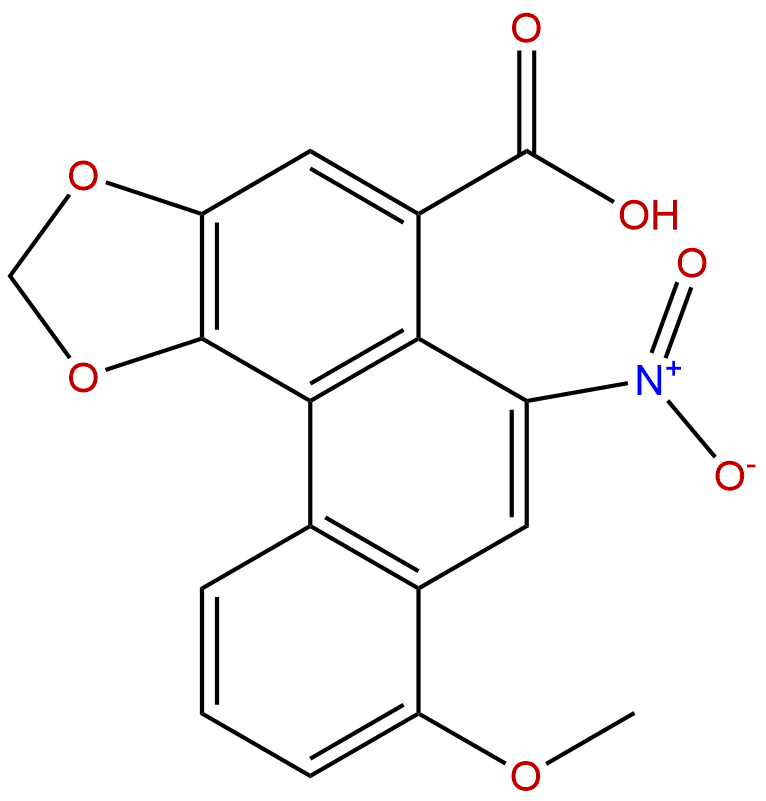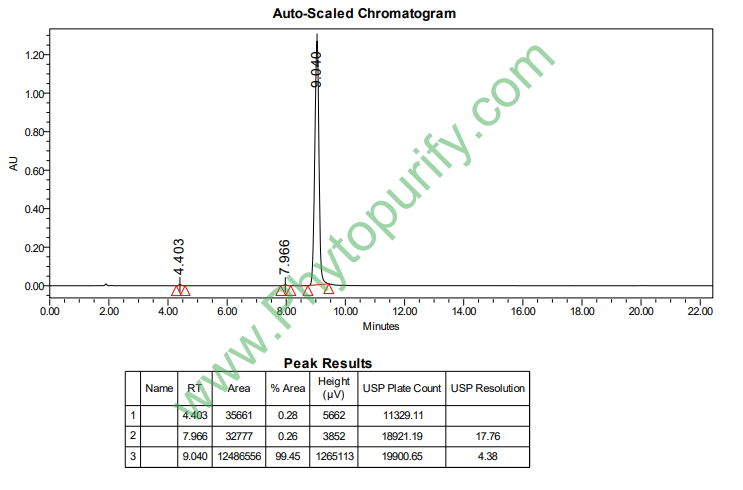
Aristolochic acid ACAS No.:313-67-7
|
||||||||||
 |
|
|
||||||||

| Catalogue No.: | BP0192 |
| Formula: | C17H11NO7 |
| Mol Weight: | 341.275 |
Product name: Aristolochic acid A
Synonym name:
Catalogue No.: BP0192
Cas No.: 313-67-7
Formula: C17H11NO7
Mol Weight: 341.275
Botanical Source: Alkaloid from a wide range of Aristolochia spp. Also found in the Chinese drug Fang-chi, Asarum canadense var. reflexum, Bragantia wallichii (preferred genus name Thottea), and in the butterflies Pachlioptera aristolochiae and Battus archidamas
Physical Description: Yellow powder
Type of Compound: Miscellaneous
Purity: 95%~99%
Analysis Method: HPLC-DAD or/and HPLC-ELSD
Identification Method: Mass, NMR
Packing: Brown vial or HDPE plastic bottle
Storage: Store in a well closed container, protected from air and light. Put into refrigerate or freeze for long term storage.
Whenever possible, you should prepare and use solutions on the same day. However, if you need to make up stock solutions in advance, we recommend that you store the solution as aliquots in tightly sealed vials at -20℃. Generally, these will be useable for up to two weeks.
The product could be supplied from milligrams to grams, up to kilograms
Inquire for bulk scale.
Descriptions:
Aristolochic acid, a potent human carcinogen produced by Aristolochia plants, is associated with urothelial carcinoma of the upper urinary tract (UUC), exposure to aristolochic acid contributes significantly to the incidence of UUC in Taiwan and endemic (Balkan) nephropathy .[1]
DNA damage by aristolochic acid (AA) is not only responsible for the tumour development but also for the destructive fibrotic process in the kidney; AA is a powerful nephrotoxic and carcinogenic substance with an extremely short latency period, not only in animals but also in humans, therefore, all products containing botanicals known to or suspected of containing AA should be banned from the market world wide.[2,3]
Aristolochic acid can induce proximal tubule apoptosis and epithelial to mesenchymal transformation.[4]
Aristolochic acid induces tumors in rats and mice, activates mutations at codon 61 of the c-Ha- ras gene in thin-tissue sections of tumors. [5]
References:
[1] Chen C H, Dickman K G, Moriya M, et al. P Nat Acad Sci US A, 2012, 109(21):8241-6.
[2] Grollman A P, Shibutani S, Moriya M, et al. P Nat Acad Sci US A, 2007, 104(29):12129-34.
[3] Arlt V M, Stiborova M, Schmeiser H H. Mutagenesis, 2002, 17(4):265-77.
[4] Pozdzik A A, Salmon I J, Debelle F D, et al. Kidney International, 2008, 73(5):595-607.
[5] Schmeiser H H, Scherf H R, Wiessler M. Cancer Letters, 1991, 59(2):139-43.
[6] Zhu G, Wang Z, Wang Q, et al. China Pharmacy, 2006, 17(18):21-4.
HPLC of Aristolochic acid A
